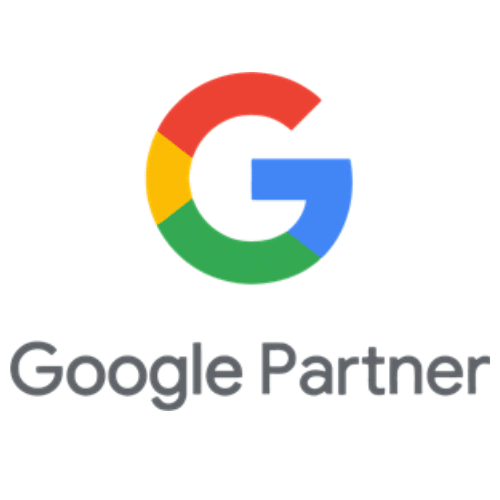Pay-per-click (PPC) advertising can be a game-changer for driving targeted traffic and new customers to your business. But without effective optimization, even the best campaigns might struggle to deliver the results you need.
Whether you’re looking to lower your cost per click or generate higher-quality leads, these five proven PPC hacks can help elevate your Google Ads performance.
Why PPC is Effective for Building Material Manufacturers
For industries like building materials, where consumers often search for specific products or services online, PPC is incredibly effective. It enables you to reach audiences actively seeking what you offer, meaning every click brings in highly relevant traffic.
Compared to other forms of advertising, PPC can:
- Generate highly targeted leads
- Increase brand awareness
- Attract authoritative backlinks
- Deliver immediate traffic, while SEO builds longer-term organic reach
Let’s dive into the specific strategies that can help maximize your PPC investment.
Hack 1: Master the “Peel & Stick” Method
The “Peel & Stick Method,” coined by marketer Perry Marshall, is a powerful way to fine-tune your keywords for optimal results. This process involves separating high-performing keywords into their own ad groups, enabling focused bidding and targeting.
Steps to Implement the Peel & Stick Method:
- Write a Google ad that uses your main keyword and relates to a specific service or product that you are promoting
- Next, add keyword variations to use for bidding to display your ad
- Wait a week to see how certain keywords perform
- Take the keywords with the highest CTR and move them into their own ad groups
- Write an ad that incorporates the keyword in both the headline and the ad copy text
Your new groups may have only a few keywords in them. As long as they are high performing, one or two keywords per ad is enough [Source]
This method helps you avoid wasted ad spend and ensures that each ad group drives quality leads for its dedicated keyword.
Example: Let’s say you’re running ads for “high-quality building supplies.” After a week, you find that “premium wood supplies” has a higher clickthrough rate (CTR). Move this keyword into its own ad group, adjust the bidding, and create tailored ad copy to drive better results.
Hack 2: Refine Your Campaign with Negative Keywords
Negative keywords are a cost-saving tool to prevent your ad from displaying for irrelevant searches. By excluding terms that don’t align with your goals, you can optimize your ad spend and improve targeting.
How to Build a Negative Keywords List:
- Analyze search terms: Use the “search term” report in Google Ads to identify terms that generate irrelevant clicks.
- Add common negative keywords: Words like “free” or “cheap” may draw in customers not aligned with a high-quality product or service.
- Regularly update your list: PPC campaigns evolve, so review and update your negative keywords over time.
Tip: Here’s Google’s guide to adding negative keywords to your account and campaigns.
Example: If you’re a premium supplier, terms like “budget building materials” might attract clicks from price-sensitive customers, so adding “budget” as a negative keyword could save money and increase lead quality.
Hack 3: Split Test (A/B Test) Your Ads
Test, test, and test again. When it comes to PPC, split testing is your best friend.
Testing different versions of your ads is key to PPC success. A/B testing (or split testing) helps determine which variations resonate most with your audience and drive the best results.

How to Run an Effective Split Test:
- Choose a variable to test: This could be a headline, ad copy, call-to-action, or keyword.
- Set up a campaign experiment: In Google Ads, create an experiment with two ad variations, splitting your traffic equally.
- Run the test for a minimum duration: Aim for at least one week to collect enough data for statistical relevance.
Example of Split Testing
For example, say you want to test the headline “Budget Remodeling Materials in Los Angeles” against “Affordable Remodeling Materials in Los Angeles”.
You can set up an experiment with two versions of the ad; one including “budget” and the other with “affordable”. You can then split your traffic 50/50 and see which headline performs the best. The “winning” version can then be set as the go-to version of the campaign.
Here are some other components that you can test:
- Ad Copy
- Call-to-Action
- Bidding Strategy
- Landing Page
- Ad Schedule
- Keywords and Negative keywords
- Geographical Targeting
Split testing allows you to pinpoint what copy or keyword variations attract more clicks and conversions, helping you refine your ads based on real data.
Here’s how to conduct split tests and other campaign experiments in Google Ads.
Hack 4: Optimize Your Account Structure
A well-organized Google Ads account is crucial for managing your campaigns effectively. Organizing your campaigns and ad groups around specific keywords ensures your ads are highly relevant, improving quality scores and lowering costs.
Account Structure Tips:
- Ad Groups: Create dedicated ad groups that focus on a single primary keyword with variations (e.g., “premium building supplies” and “high-quality building supplies”).
- Use “silos”: Each ad group should act as a silo with closely related keywords and match types to ensure relevance.

Example Structure: Organize your ads into specific campaigns like “Wood Supplies” and “Stone Supplies,” with ad groups for each keyword variation. This way, your ads remain relevant and targeted, leading to higher quality scores.
Below is an example of what your ad campaign + ad group setup should look like:
Hack 5: Leverage Keyword Match Types Wisely
Match types let you control which searches trigger your ads, ensuring you only pay for highly relevant traffic. If you’re not careful with match types, you may waste budget on clicks that don’t convert.
Types of Keyword Matches:
- Exact Match: Highly specific, only triggering for exact keyword searches.
- Broad Match: Reaches a wide audience but may lack relevance.
- Phrase Match: Matches exact phrases, increasing relevance.

Consider using phrase match and exact match for more precise targeting. Broad match can be useful when combined with negative keywords, but avoid relying solely on it to prevent wasted ad spend.
Example: If you sell “custom wood flooring,” an exact match on this term ensures only users specifically looking for “custom wood flooring” will see your ad, minimizing irrelevant clicks.
Setting these parameters helps you control what users see your ads, ensuring that you aren’t wasting money on people that aren’t interested in your products or services.
For a deeper dive, Google’s guide to keyword match types provides helpful insights.
Monitoring & Reporting: Tracking Your Success

After implementing these hacks, monitor your campaigns regularly:
- Clickthrough Rate (CTR): Are people engaging with your ad?
- Conversion Rate: Are those clicks turning into leads or sales?
- Cost per Click (CPC): Are you getting value for your spend?
Regularly tracking and adjusting these metrics is vital to improving your Google Ads performance over time. Google Analytics and conversion tracking can help analyze which ads are generating the best ROI.
Common Pitfalls to Avoid
PPC can be complex, so here are a few pitfalls to watch out for:
- Ignoring mobile optimization: Many users search on mobile, so ensure ads are optimized for smaller screens.
- Neglecting ad copy updates: Regularly refresh your ad copy to stay relevant.
- Poor landing page experience: Your landing page should be relevant, fast, and designed to convert.
Use PPC Optimization Hacks on Your Google Ad Campaigns

PPC offers building material manufacturers an effective and affordable way to reach highly targeted customers actively searching for their products. With these five hacks, you can improve your Google Ad campaigns’ efficiency, lower costs, and drive more quality leads.
Ready to take your PPC skills to the next level? Start testing these tactics today and watch as your Google Ads performance improves!
Got questions about SEM or Google Ads? Request a Free Consultation today!

